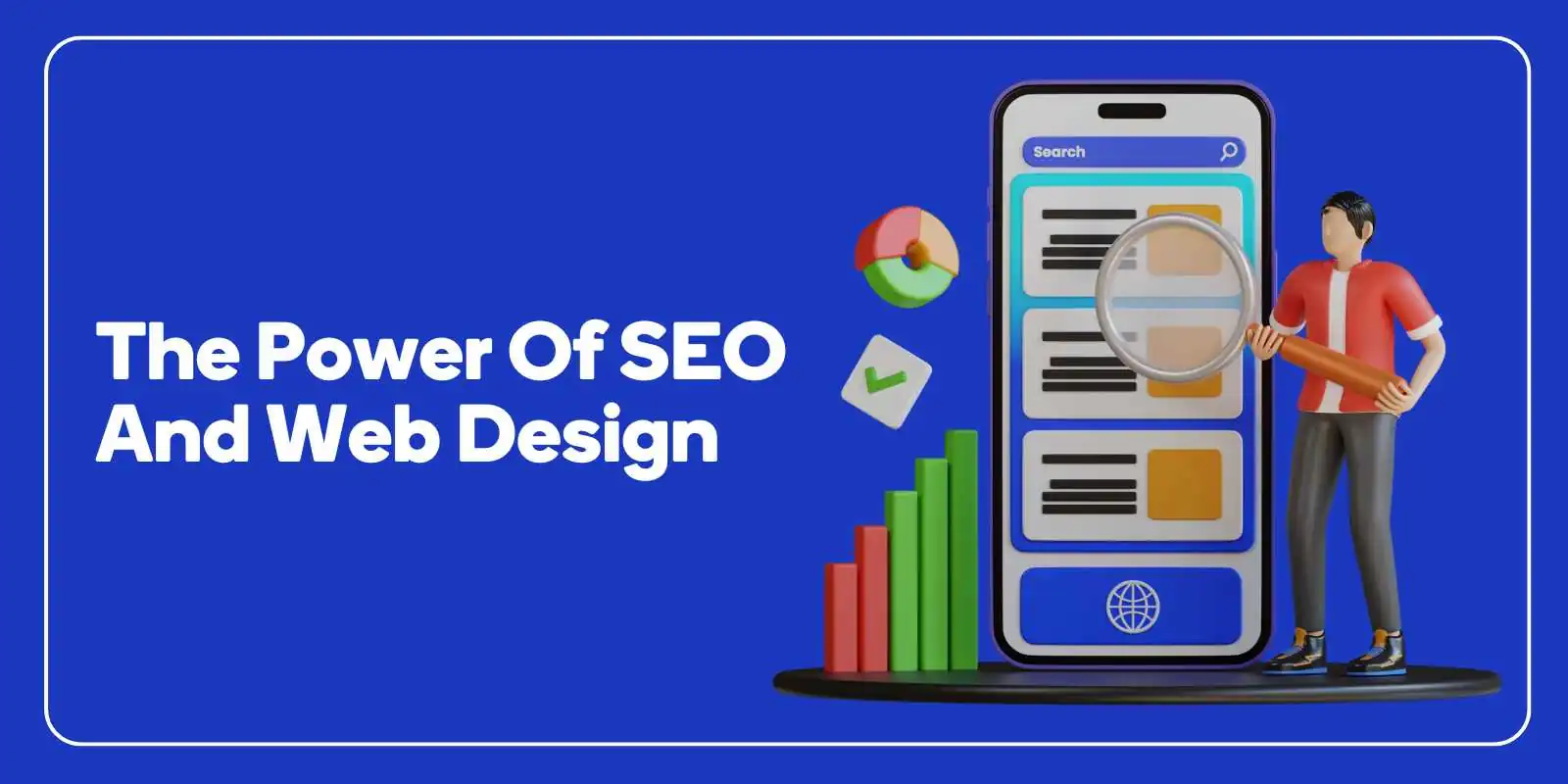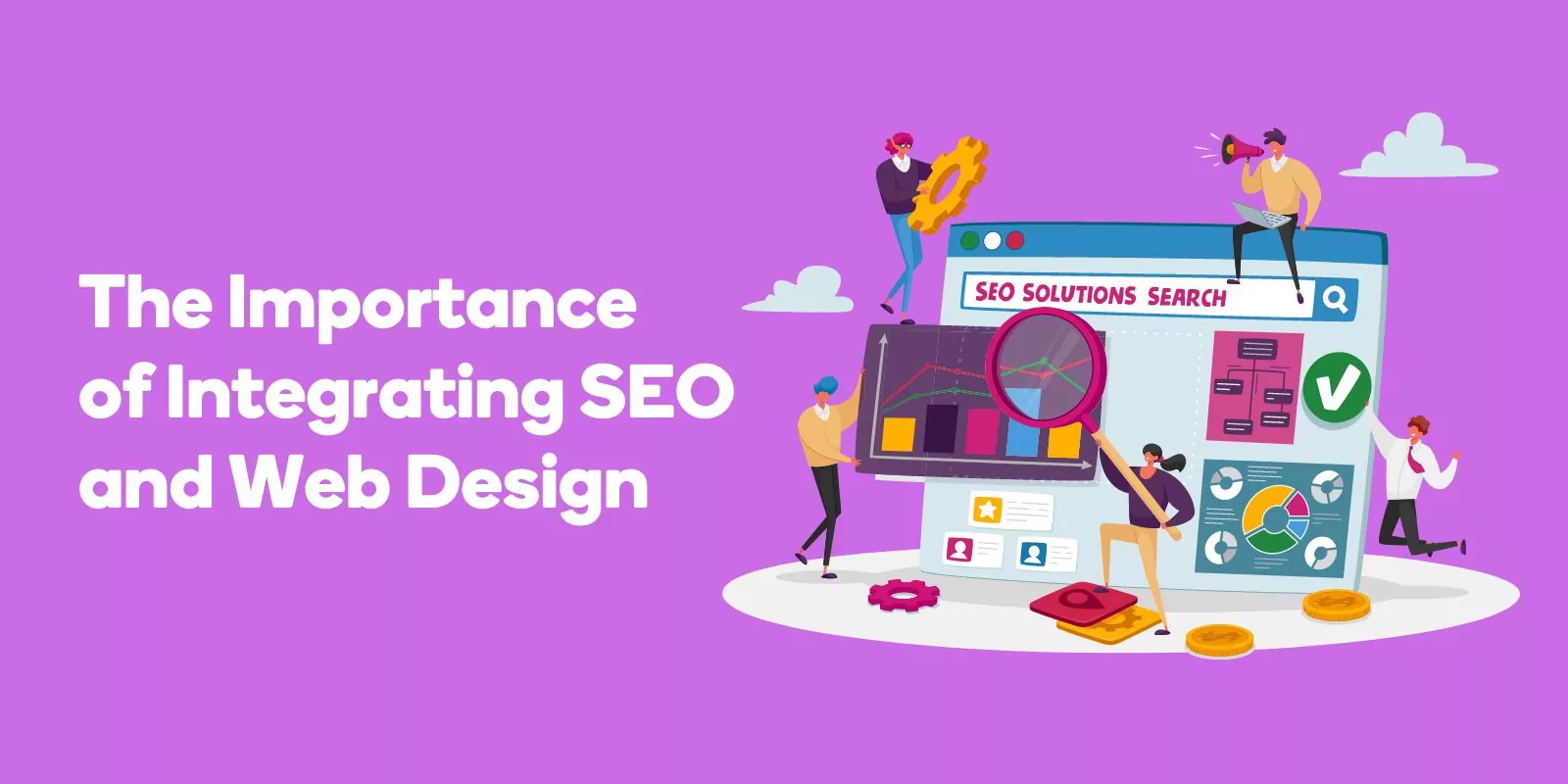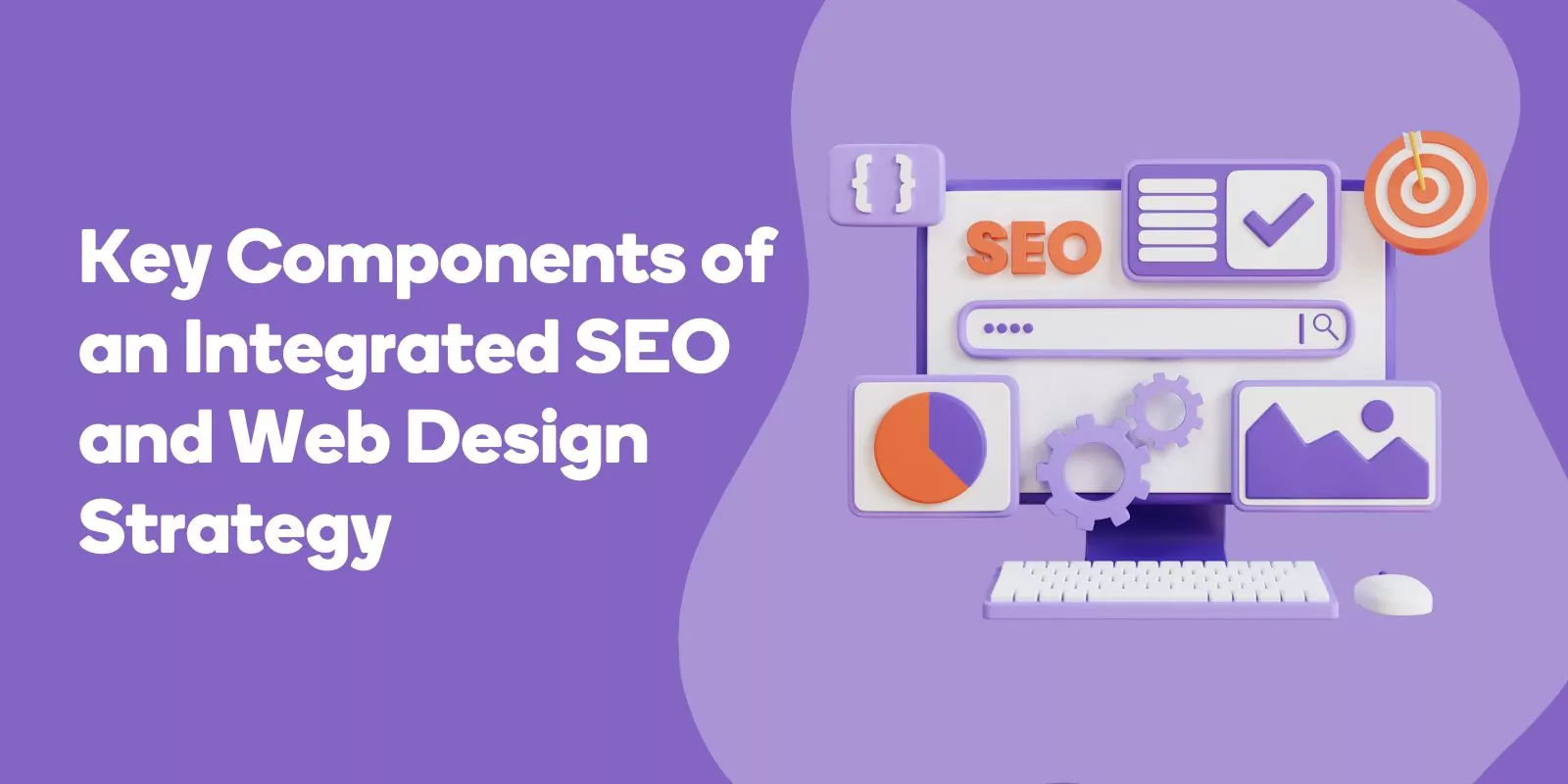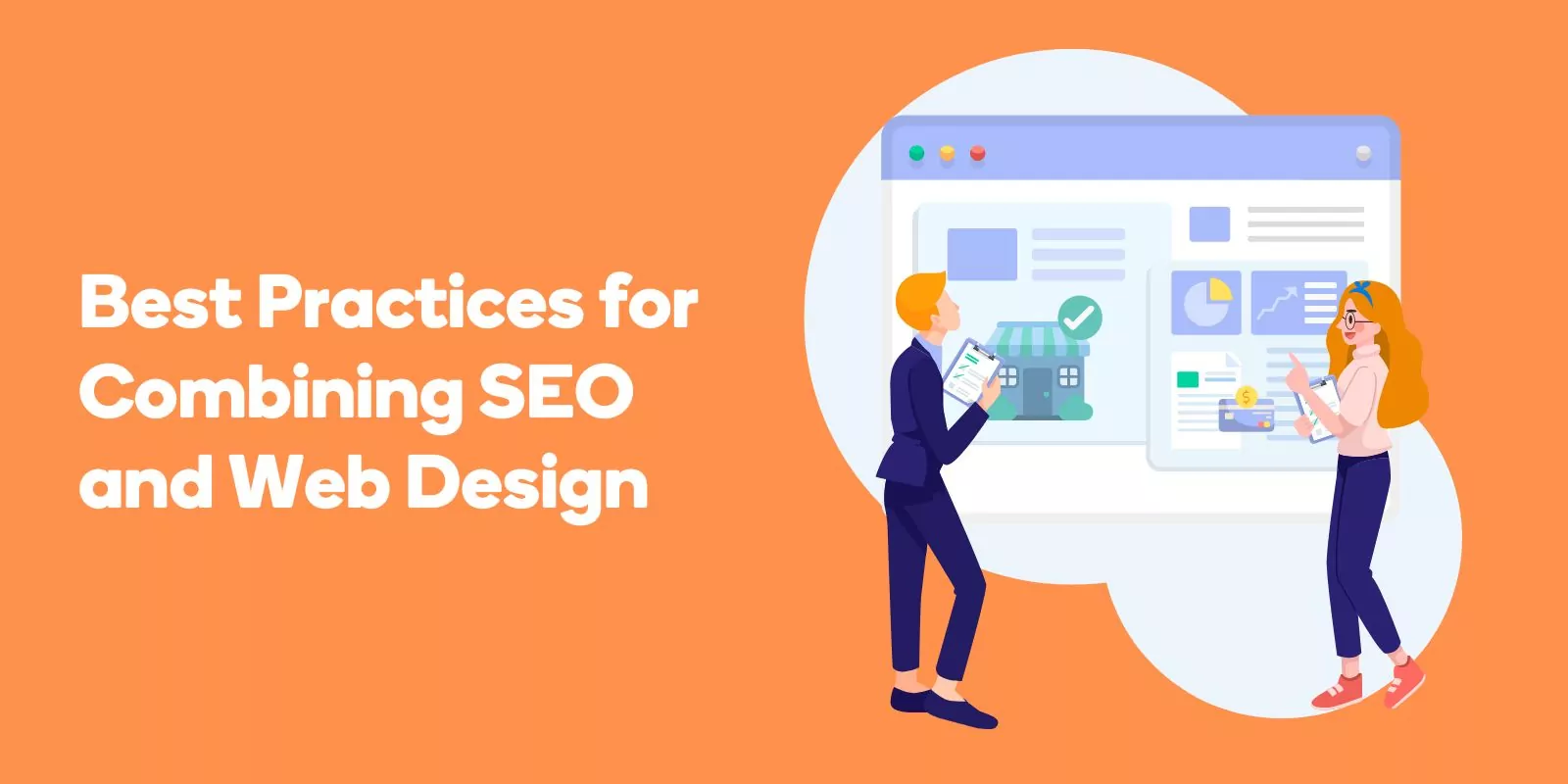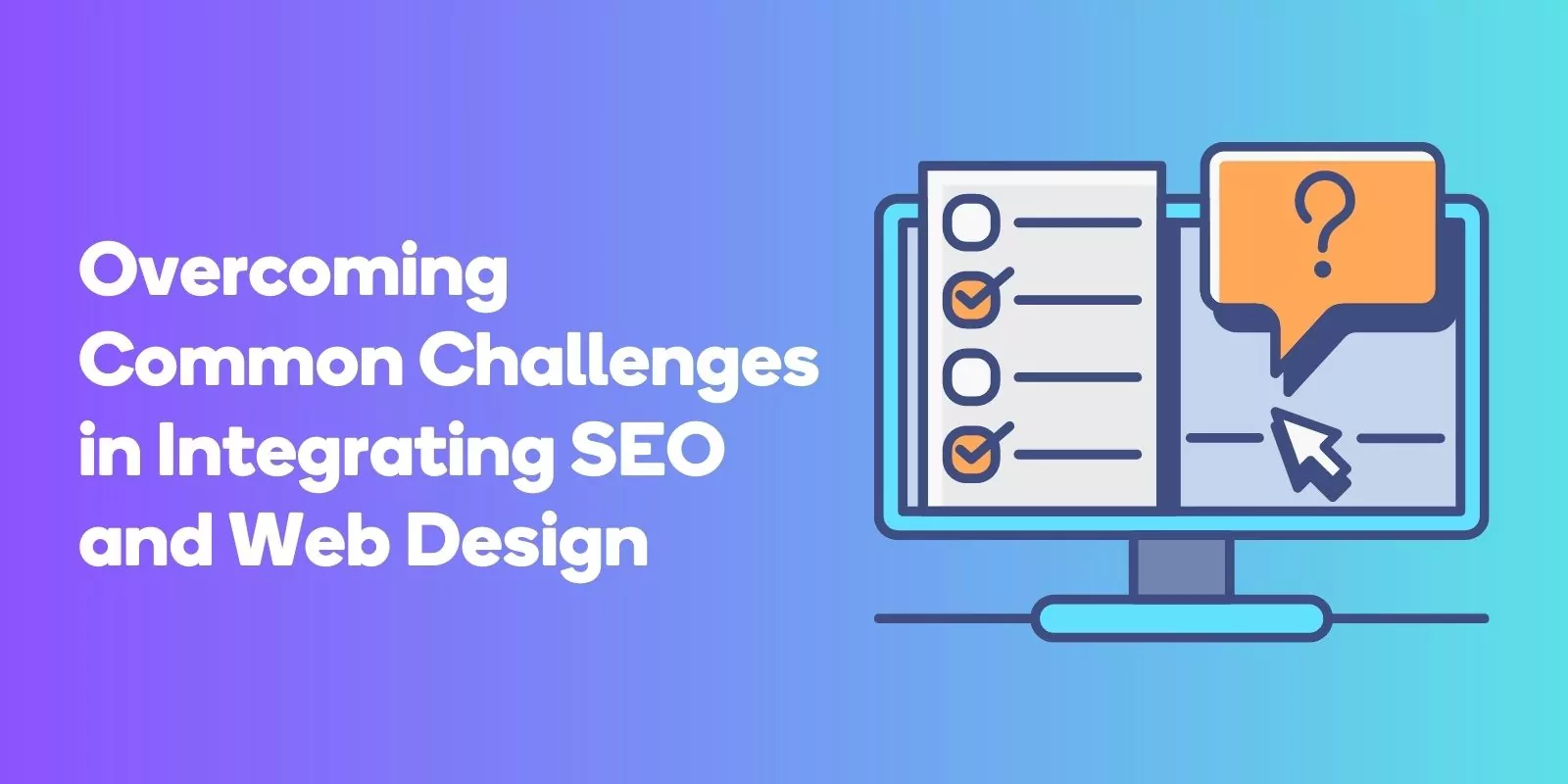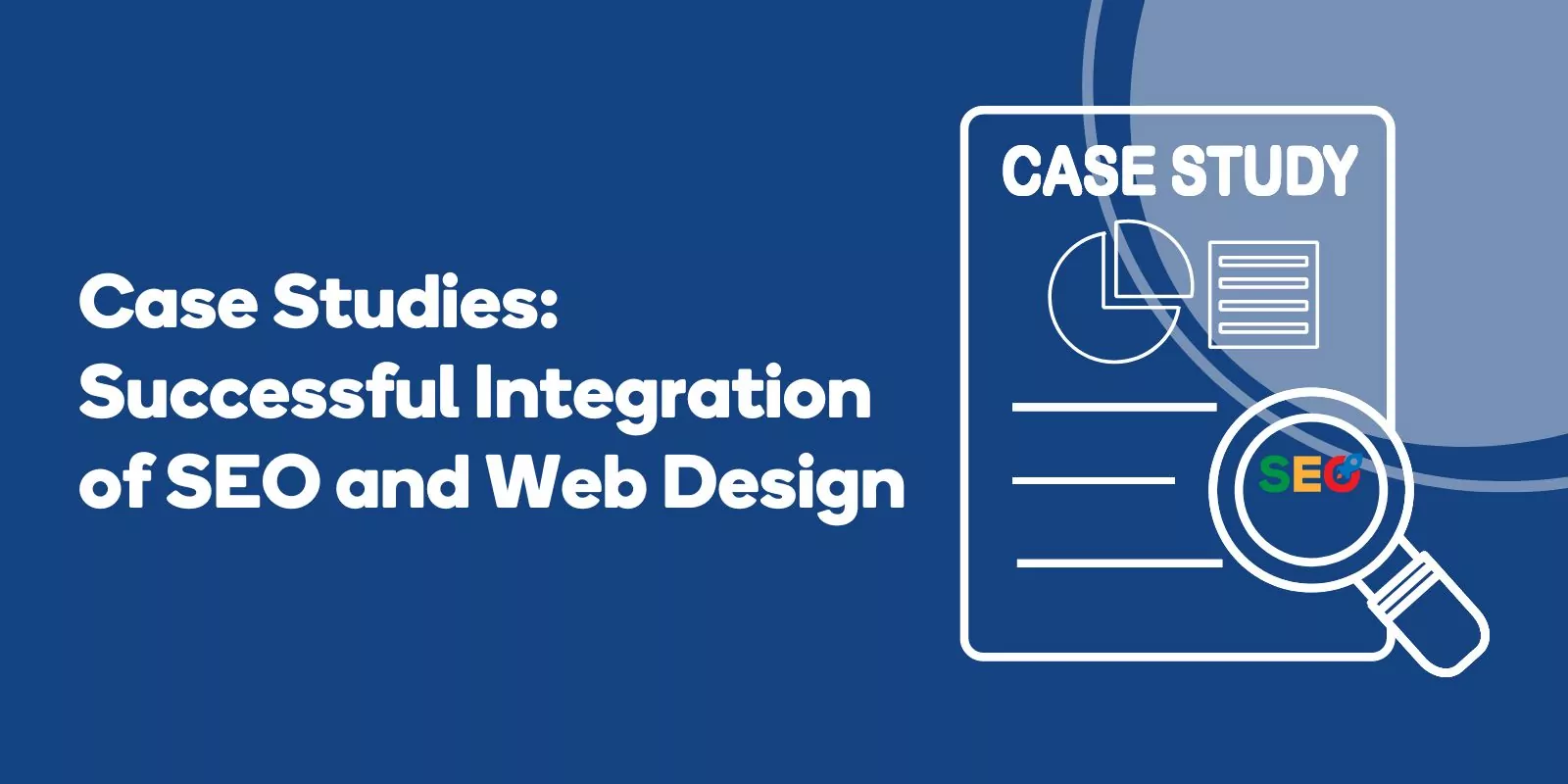This blog post will guide you through the benefits and key components of “seo and web design an integrated approach for maximum impact”, providing actionable insights and real-life examples that will inspire you to take your online presence to new heights.
In the upcoming sections, we’ll explore the importance of integrating SEO and web design, the essential components of a cohesive strategy, best practices for combining these two disciplines, overcoming common challenges, and successful case studies that demonstrate the power of a well-executed integration. Let’s dive in!
The Importance of Integrating SEO and Web Design
The convergence of SEO and web design is crucial for a triumphant online presence, offering numerous advantages to businesses.
By integrating these two disciplines, businesses can enjoy higher search engine rankings, enhanced user experience, and a cost-effective marketing approach.
In essence, a well-integrated strategy creates a synergy between the technical aspects of SEO and the visual appeal of web design, resulting in an optimized website that attracts both search engines and potential customers.
Understanding the importance of SEO and web design integration will set the foundation for a successful online presence.
Throughout this post, we’ll dive into the specific benefits of higher search rankings, improved user experience, and a cost-effective marketing strategy, showcasing how an integrated approach can propel your business to greater heights.
Higher search rankings
An integrated approach to SEO and web design is vital for constructing a website that performs well in both search engine rankings and user experience, leading to improved search engine rankings and heightened visibility.
To ensure search engines effectively access your web pages, it is necessary to have good navigational elements, a sitemap, descriptive URLs, and descriptive file names for images.
As a result, both search engines and users can easily find and navigate your website, increasing the likelihood of conversions and higher search rankings.
Moreover, Google’s algorithm considers user experience-related metrics when determining website rankings.
Therefore, having a website optimized for user experience can aid in improving search engine rankings.
Additionally, meta tags, meta descriptions, and other SEO elements are critical for helping search engines understand the content on your pages, increasing visibility, and assisting users in finding exactly what they’re searching for.
Improved user experience
Combining SEO and web design not only improves search engine rankings but also enhances the overall user experience on your website.
To create an enjoyable and seamless user experience, it is essential to align content with the visual hierarchy, which can lead to content revisions and provide tangible SEO benefits.
A successful web designer should be able to create both functional and aesthetically pleasing designs, ensuring that your website appeals to users while also adhering to SEO best practices.
Maintaining small file sizes, optimizing images, and creating an easy-to-navigate website structure are all crucial aspects of improving user experience.
By harmonizing header tags with the visual hierarchy and ensuring your website functions properly, you can create a visually comprehensible and user-friendly website that both search engines and users will appreciate.
A well-designed website that caters to user experience will not only improve search rankings but also increase engagement, conversions, and overall satisfaction for your potential customers.
Cost-effective marketing strategy
One of the most significant advantages of integrating SEO and web design is the potential for cost savings, as it eliminates the need for separate optimization efforts.
By focusing on creating a website that is visually appealing and optimized for search engines from the start, businesses can save time and resources that can be better spent on other marketing initiatives.
Additionally, optimizing elements such as website load time and images can have a profound impact on your website’s performance and search engine rankings.

Award-Winning
Sales Funnel & Website Expert
Ready for Revenue – Not Just “Traffic”?
- Websites that Work: Clean, fast, built to convert – no design fluff.
- Funnels that Sell for You: Step-by-step paths that turn clicks into paying customers.
- SEO That Hunts Buyers: Show up exactly when prospects reach for their wallets.
By ensuring that your website is properly optimized for both search engines and users, you’ll see an increase in organic traffic and conversions, ultimately making your marketing strategy more cost-effective and efficient.
Key Components of an Integrated SEO and Web Design Strategy
To successfully integrate SEO and web design into company website, it’s essential to consider several key components that combine the technical aspects of SEO with the visual elements of web design.
These components include keyword research and targeting, site architecture and navigation, and content creation and optimization.
By focusing on these elements, you can create a cohesive and effective plan for incorporating SEO and web design, ensuring that your website is optimized for both search engine rankings and user experience.
Throughout the following sections, we’ll explore each of these components in greater detail, providing insights and best practices for effectively combining SEO and web design.
By understanding and implementing these key components, you’ll be well on your way to creating a website that not only ranks highly in search engine results but also provides a seamless and enjoyable experience for your users.
Keyword research and targeting
Understanding keyword demand and selecting appropriate keywords to target is a crucial aspect of an integrated SEO and web design strategy.
By conducting thorough keyword research, you can identify where your website traffic is likely to come from and create a clear, comprehensive plan for success.
This research will also inform the information architecture of your site and guide the selection of pages that will be featured on your domain.
Optimizing your URL structure with relevant keywords and incorporating focus keywords in page titles and URL slugs can also help search engines identify which keywords to rank your pages for while keeping them accessible.
Additionally, incorporating a brand name and relevant keyword into your domain name can expedite your SEO search results, and set your website up for success.
When selecting a domain name, consider your potential growth into a statewide, nationwide, or global organization and avoid including local identifiers.
Site architecture and navigation
Site architecture and navigation play a vital role in enhancing user experience and improving search engine indexing.
By optimizing your site structure and navigation, you can provide internal links to the most important pages on your website, increasing the number of internal links for each page and improving your website’s overall performance in search engine rankings.
Creating a well-structured website with clear and easy-to-navigate pages will not only make it more accessible to users, but also aid search engines in comprehending your website’s content.
Additionally, generating and submitting an XML sitemap to Google Search Console will ensure that search engines can crawl and index all of your web pages, making them eligible for ranking.
By focusing on site architecture and navigation, you can create a website that is both user-friendly and optimized for search engines.
Content creation and optimization
Producing high-quality, relevant content that appeals to both users and search engines is a critical component of an integrated SEO and web design strategy.
This involves creating engaging and informative content that targets the right keywords, key phrases, and addresses the needs and interests of your target audience.
Incorporating on-page SEO elements such as title tags, meta descriptions, headings, and image optimization will aid search engines in understanding your content and determine its relevance to a searcher’s query.
By focusing on creating high-quality content that is both informative and optimized for search engines, you’ll be able to attract more organic traffic, capture more qualified leads, and ultimately, improve your website’s overall performance in search engine rankings.
Best Practices for Combining SEO and Web Design
Now that we’ve explored the importance and key components of integrating SEO and web design, it’s time to delve into some best practices that can help you effectively combine these two disciplines.
By following these guidelines, you can ensure that your website is visually appealing and optimized for search engine rankings, maximizing its potential impact on your online presence.
In the upcoming sections, we’ll discuss mobile-first design, page load and page speed optimization, and on-page SEO elements, offering actionable insights and recommendations that will help you create a website that ranks highly in search engine results while providing a seamless and enjoyable experience for your users.
Mobile-first design
As mobile devices continue to dominate internet usage, designing websites with mobile devices in mind is more crucial than ever.
By adopting a mobile-first design approach, you can ensure that your website is optimized for mobile devices and provides an improved user experience on smartphones and tablets.
This, in turn, can lead to increased engagement and conversions, as well as improved search engine rankings.
By prioritizing mobile-first design, you can create a website that caters to the growing number of users who access the internet through their mobile devices, without compromising on the aesthetics and functionality of your website on desktop devices.
This holistic approach ensures that your website is accessible to all users, regardless of the device they’re using, and sets your website up for success in search engine rankings.
Page load speed optimization
Page load speed is an essential component of both user experience and search engine rankings. Websites that load quickly not only provide a better experience for users, but are also more likely to rank higher in search engine results.
To optimize your website’s page load speed, consider utilizing tools such as Google PageSpeed Insights or the Lighthouse tool within Chrome Dev Tools to identify and address any loading issues.
Additionally, it’s essential to optimize images and other media files on your website to reduce file sizes and improve loading times.
By focusing on page load and page speed optimization, you can create a website that loads quickly and efficiently, providing a better experience for users and improving your search engine rankings.
On-page SEO elements
On-page SEO elements are critical components of an integrated SEO and web design strategy, as they help search engines understand your website and its content, as well as determine its relevance to search terms in a searcher’s query.
By optimizing elements such as title tags, meta descriptions, headings, and image optimization, you can ensure that your website’s content is both informative and appealing to search engines.
Focusing on essential on-page SEO factors will not only improve your website’s search engine rankings, but also enhance the overall user experience, as users will be more likely to find the information they’re looking for on your website.
By optimizing your on-page SEO elements, you can create a website that is both visually appealing and optimized for search engines, maximizing its potential impact on your online presence.
Overcoming Common Challenges in Integrating SEO and Web Design
While integrating SEO and web design can offer numerous benefits, it’s essential to be aware of potential challenges that may arise during the process.
By understanding and addressing these obstacles, you can ensure that your integrated strategy is effective and successful.
In the following sections, we’ll explore the common challenges of balancing aesthetics and functionality, as well as aligning goals and expectations among team members.
By addressing these challenges head-on, you can create a website that is both visually appealing and optimized for search engine rankings, ensuring that your online presence reaches its full potential.
Balancing aesthetics and functionality
Achieving the right balance between visually appealing design and search engine optimization can be a challenge, but it’s essential for the success of your integrated strategy.
To find the right balance, prioritize user experience and ensure that your website is easy to navigate and visually engaging while incorporating relevant keywords and SEO best practices.
By focusing on creating a website that is both aesthetically pleasing and functional, you can ensure that users have an enjoyable experience on your site, while also improving your search engine rankings.
Remember that a well-designed website that caters to user experience will not only improve search rankings but also increase engagement, conversions, and overall satisfaction for your potential customers.
Aligning goals and expectations
Another challenge when integrating SEO and web design is ensuring that all team members are working towards the same end goal.
Clear communication and setting specific objectives are essential to guarantee that everyone involved in the project is aligned and working towards the same desired outcome.
By establishing clear objectives and regularly communicating with all team members, you can avoid potential confusion or misinterpretations that could arise from indistinct goals.
This alignment will contribute to the successful and efficient completion of the project, ultimately leading to a website that is both visually appealing and optimized for search engine rankings.
Case Studies: Successful Integration of SEO and Web Design
To further illustrate the power of integrating SEO and web design, let’s explore some real-life examples of businesses that have effectively combined these two disciplines for maximum impact.
These case studies showcase how a well-executed integration can increase organic traffic, capture more qualified leads, and improve conversion rates, ultimately leading to a more successful online presence.
In the following sections, we’ll discuss two specific examples of successful web development integration, detailing the strategies employed and the results achieved.
These case studies will provide valuable insights and inspiration for businesses looking to optimize their online presence through the integration of SEO and web design.
Example 1: Credo Financial
In this first example, Credo Financial sought to enhance their online presence and reach a wider customer base.
The strategies employed included understanding the sources of traffic, creating a content-map, undertaking pre-launch obstacle analysis, optimizing web page designs for SEO, utilizing website analytics to measure success, and developing an SEO plan prior to launch.
As a result of these efforts, the company experienced heightened online presence, an augmented customer base, and improved organic search engine rankings.
This example demonstrates the power of a well-executed integration of SEO and web design, showcasing the potential benefits and impact on a business’s online presence.
Example 2: Lone Rock Consulting
In the second example, Lone Rock Consulting successfully integrated SEO and web design by prioritizing both the technical aspects of SEO and the visual appeal of their new website.
Through diligent research, careful planning, and consistent communication among team members, the business was able to create a new website, that not only ranked highly in search engine results but also provided a seamless and enjoyable experience for its users.
This example highlights the importance of aligning goals and expectations, as well as balancing aesthetics and functionality when integrating SEO and web design.
By learning from these successful case studies, businesses can better understand how to effectively combine these two disciplines for maximum impact and improved online presence.
Frequently Asked Questions
What is the SEO strategy of web design?
SEO web design is the process of designing a website with an effective search engine optimization strategy in mind. This involves building a website that not only looks attractive and is easy to navigate, but also uses techniques like keyword research, content optimization, link building, and technical SEO to make it visible to search engines.
This helps your website rank higher in organic search results and increases its visibility to potential customers.
What is SEO integration?
SEO integration is the process of making website content more discoverable and indexable by search engines like Google, Bing and Yahoo. It involves optimizing code, structure, content, keywords, metadata, URL’s and other elements to help make your website more visible in the SERPs.
By optimizing these elements, you can increase your website’s visibility and ranking in the SERPs, which can lead to more organic traffic and conversions.
What does SEO stand for in web design and development?
SEO stands for Search Engine Optimization and is the practice of optimizing websites to gain more visibility in search engine results pages, thus increasing both the quantity and quality of website traffic.
SEO ensures that a website can be found when people are searching relevant keywords, which can lead to improved organic reach and increased website traffic.
How do I increase SEO on Instagram?
To increase SEO on Instagram, optimize your profile with keywords, use descriptive captions with relevant hashtags, and include descriptive alt text to posts. Additionally, post at the right time for maximum reach and engagement, and lean into your niche.
Finally, track and optimize regularly to ensure you remain visible in search feeds.
Conclusion
In conclusion, the integration of SEO and web design is essential for a successful online presence and beyond.
By understanding the importance of integrating these two disciplines, focusing on key components such as keyword research, site architecture, and content creation, and following best practices for combining SEO and web design, businesses can create a website that is both visually appealing and optimized for search engine rankings.
As we’ve explored throughout this post, overcoming common challenges and learning from successful case studies can provide valuable insights and inspiration for businesses looking to optimize their online presence.
By embracing the power of SEO and web design integration, your business can reach new heights and achieve lasting success in the digital marketing landscape.
